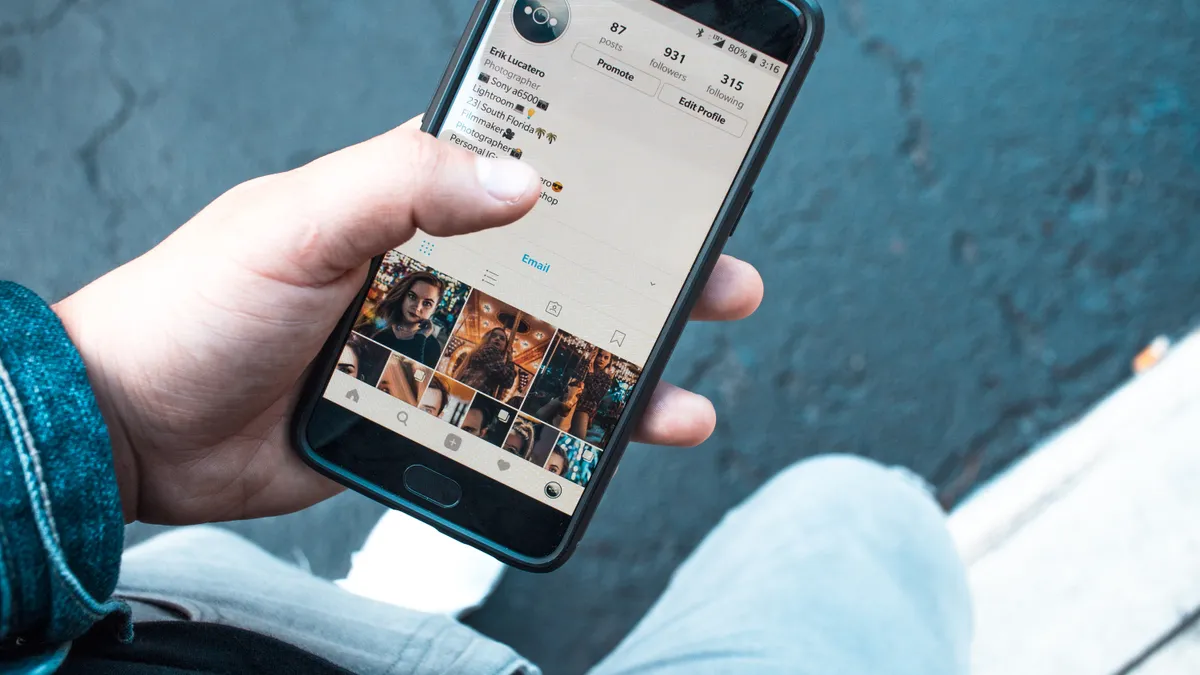NEW YORK — Digital video is exploding, but at the same time, marketers are waging a battle against "thumb scrolling," where people swipe past anything in their newsfeeds that isn't immediately arresting, according to several executives presenting at the IAB's Digital Video Symposium on Monday.
To craft mobile- and social media-focused digital video that breaks through the noise, panelists said brands should focus on creative that's not just visually compelling but also built on a clear sense of purpose, whether that'sdriving people into stores or simply increasing awareness. Tying these aspects together requires demonstrating value early on — sometimes in just a few seconds.
"Marketing, in totality, is really how you think of an uninvited guest," Sara Holmgren, VP of integrated brand marketing at Macy's, said on a panel that also included representatives from IBM's original productions unit and The New York Times' T Brand Studio.
Don't be a pest
Holmgren compared marketers' role to that of a raccoon sneaking into someone's house, and added that being accepted as part of the online experience instead of rejected as a pest is a badge that needs to be earned in an age where consumers have more autonomy. Macy's has seen success in the space by leveraging newer formats like Instagram Live Share for its "Find Remarkable You" campaign, where the retailer pitted fashion influencers in a live-streamed competition to see how they styled items from its spring clothing line.
"The evolution of digital has put us in this place where the customer has a choice to either engage with your brand or not," Holmgren said. "The flip side is that, you have the opportunity to have the customer elect to engage with you [...] They'll search and hunt for content from you."
Making a connection is proving difficult, however, against a proliferation of other digital media content and the mobile channel's laser focus on speed. Digital video marketers, including some of those on the panel like T Brand Studio's Executive Video Producer Sydney Levin, are adhering more to a "three second rule" to quickly command eyeballs.
"You do have to take those first three seconds to get your point across and to basically put a stake in the ground," Levin said.
The next best action
An effective digital video strategy that combines the tactics highlighted by executives on the IAB panel might be crucial as the format snaps up a considerable share of investment. Industry professionals now put nearly 60% of their total digital advertising budgets toward video, and nine in 10 report original digital video programming is "critical" to their media plans, according to recent research from the IAB. The trade group, in another report, also found that original digital video is starting to attract a wider, more diverse audience. Audiences for digital video content tend to skew younger and be more tech-savvy, and 43% are non-white.
Sussing who exactly a campaign is trying to reach — and, more importantly, what a brand wants that person to do after engaging with the content — is another piece of the puzzle that can be easy to overlook in the rush to keep up with digital video trends.
"Content for the sake of content is fantastic [...] but you have to determine, what is the next best action we want [consumers] to take, and how are we going to be measured?" said Kristen Hartley, worldwide content director of IBM Originals' Telco, Media and Entertainment arm. She said those next best actions can be buying a solution, watching more content or simply raising brand awareness.
"Hyper-personalize whatever that content is for that audience, and then look at data and take a chance on what's compelling," she added. "It sounds like a lot of steps but it's not brain surgery."
Looking past views
Beyond the pre-planning phase, it's also important for marketers to track campaign performance, and not just as determined by traditional marketing metrics or in a vacuum, panelists said.
"At the end of the day, it's about ringing the register," Macy's Holmgren said.
"Completion rate is definitely something that’s top of mind when looking specifically at video," she said, noting that Macy's keeps internal benchmarks to measure current campaigns against past ones. “But with the way that media helps to drive viewership, you certainly just can't look at views alone [...] thinking about how the customer engages with the content becomes critical."
Factors like production costs and a cross-channel approach are other considerations to keep in mind. Roughly 17% of consumers surveyed by Kantar Millward Brown think online ads should be riskier or edgier than TV ads. A quarter of consumers from the same study said that TV and online video ad lengths should be the same, but need to cut to the chase quicker, and 15% reported online ads should show the brand earlier.
These demands don't necessarily bar brands from repurposing TV efforts, however. Panelists suggested that good TV creative should be rich enough to work both as a standalone piece and when trimmed down into more snackable snippets.
"In that 30 [seconds], there's probably other footage you have that can be repurposed," Holmgren said.
"With the right writer, anything can be recut," IBM's Hartley added.























